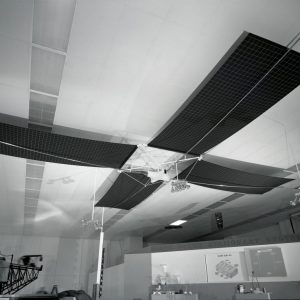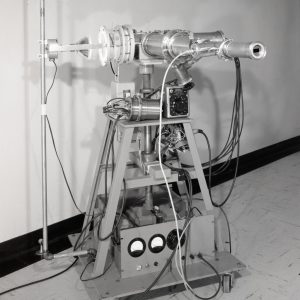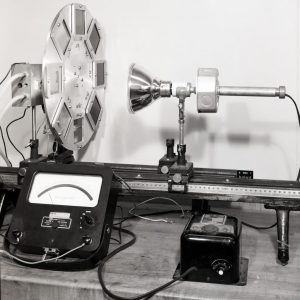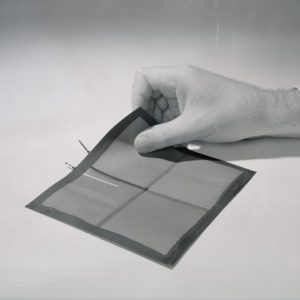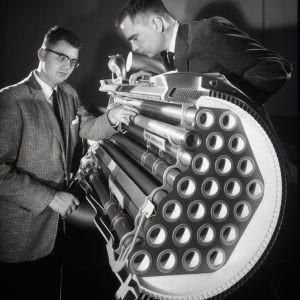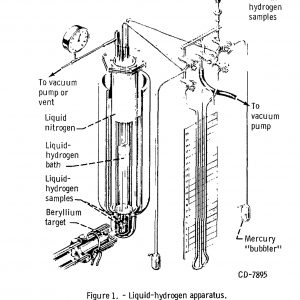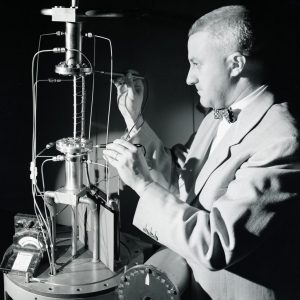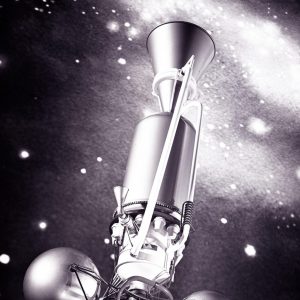Space-Related Research
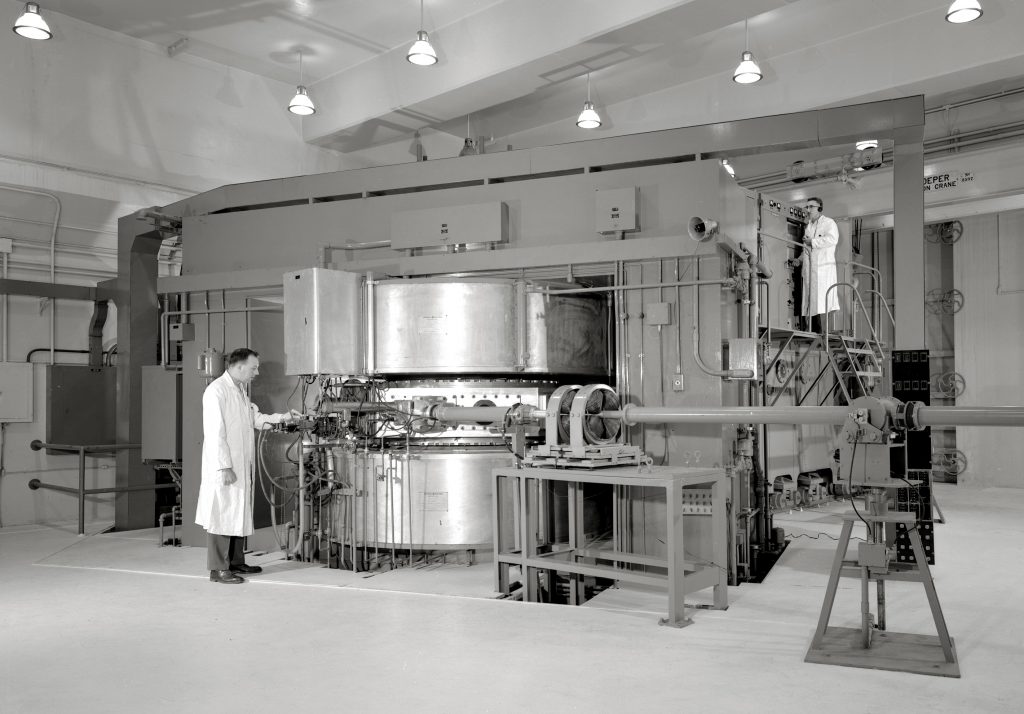
In its first 15 years, the Cyclotron Facility supported both space-related studies and general nuclear physics research.
Overview
By the time the Lewis Cyclotron Facility began operations in 1957, the nation’s technological frontier had shifted. The need for atomic aircraft faded with the emergence of intercontinental ballistic missiles. The Air Force had reconstituted its nuclear aircraft program as a joint effort with the Atomic Energy Commission (AEC) that would develop reactors for missile systems.
The Soviet Union’s launch of Sputnik, however, introduced the Space Age. The NACA was incorporated into the new National Aeronautics and Space Administration (NASA) in 1958.
Lewis researchers used the cyclotron to study radiation effects on materials for nuclear vehicles and general nuclear physics research and to support several space activities. These included materials irradiation studies, analysis of irradiated liquid hydrogen fuel for the nuclear rocket program, and solar cell degradation investigations supporting space power systems.
Solar Cell Degradation
The mid-1950s saw the emergence and improvement of silicon solar cells and thin-film solar cells that converted light into electrical energy. As the use of solar cells to power satellites grew in the 1960s, engineers discovered that exposure of silicon solar cells to the electron and proton radiation in the Van Allen Belt degraded performance and lifespan. Studies indicated that cadmium thin film cells, however, withstood electron radiation.
Lewis researchers decided to use the cyclotron to determine the effect of protons on the cadmium sulfide solar cells. The solar cells were attached to a plate at the end of a cyclotron beam duct and subjected to different levels of energy and proton stream. They concluded that cadmium sulfide thin-film cells encapsulated in polyethylene film were resistant to proton irradiation and could operate for long durations in space without significant radiation damage.
Researchers studying the Van Allen belt discovered that solar flares also generate increased levels of alpha particles. In 1965 Lewis researchers decided to use their cyclotron to produce particles to compare the damage caused by alphas and protons on solar cell materials with varying resistance levels. They found alphas and protons have identical velocity distributions and ranges and that the occasional high energy recoils from alpha particles did not significantly impact degradation.
Documents
- Radiation Damage to Cadmium Sulfide Solar Cells (1965)
- Comparison of Solar Cell Damage by Alpha Particles and Protons (1966)
Liquid Hydrogen Irradiation
Nuclear rockets were designed to use high-energy liquid hydrogen as fuel. In the early 1960s, there was little information on how radiation would affect the cryogenic—i.e., extremely low temperature—fluid.
Hydrogen always consists of two atoms. If the nuclei of these atoms rotate in the same direction, it is referred to as “ortho” hydrogen. If they spin in opposite directions, it is “para” hydrogen, which is more stable. In ambient conditions, there are three times as many ortho as para molecules, but as temperatures decrease, the amount of para increases. Ortho molecules are more volatile and ready to release energy.
The Lewis cyclotron was used to determine if radiation affected this process. A unique test apparatus was created that allowed multiple tests using the same hydrogen sample and thus reduced variance. It consisted of a small hydrogen tank with two sample tubes, which were bombarded with beryllium particles. Researchers found the radiation did not result in the expected amount of ortho to para conversion.
They also used the cyclotron to determine the effect of fast neutron radiation on temperature sensors for hydrogen fuel tanks. Thermometers were submerged in liquid hydrogen and exposed to beryllium neutrons.
These studies were conducted in preparation for a Project Rover hydrogen tank heating experiment.

